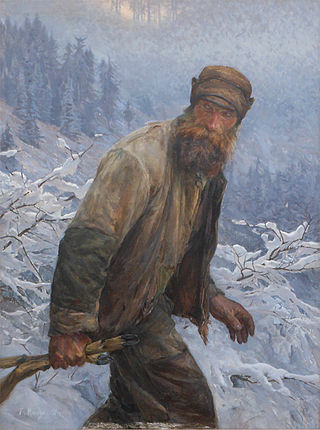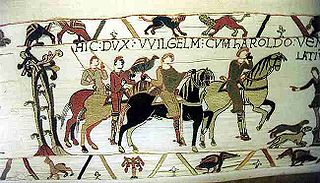Related Research Articles

Hunting is the human practice of seeking, pursuing, capturing, and killing wildlife or feral animals. The most common reasons for humans to hunt are to obtain the animal's body for meat and useful animal products, for recreation/taxidermy, although it may also be done for resourceful reasons such as removing predators dangerous to humans or domestic animals, to eliminate pests and nuisance animals that damage crops/livestock/poultry or spread diseases, for trade/tourism, or for ecological conservation against overpopulation and invasive species.

Poaching is the illegal hunting or capturing of wild animals, usually associated with land use rights. Poaching was once performed by impoverished peasants for subsistence purposes and to supplement meager diets. It was set against the hunting privileges of nobility and territorial rulers.

Falconry is the hunting of wild animals in their natural state and habitat by means of a trained bird of prey. Small animals are hunted; squirrels and rabbits often fall prey to these birds. Two traditional terms are used to describe a person involved in falconry: a "falconer" flies a falcon; an "austringer" keeps Goshawks and uses accipiters for hunting. In modern falconry, the red-tailed hawk, Harris's hawk, and the peregrine falcon are some of the more commonly used birds of prey. The practice of hunting with a conditioned falconry bird is also called "hawking" or "gamehawking", although the words hawking and hawker have become used so much to refer to petty traveling traders, that the terms "falconer" and "falconry" now apply to most use of trained birds of prey to catch game. However, many contemporary practitioners still use these words in their original meaning.

The Act 9 Geo. 1. c. 22, commonly known as the Black Act, or the Waltham Black Act, and sometimes called the Black Act 1722, the Black Act 1723, the Waltham Black Act 1722, the Criminal Law Act 1722, or the Criminal Law Act 1723, was an Act of the Parliament of Great Britain. It was passed in 1723 in response to a series of raids against landowners by two groups of poachers, known as the Blacks from their habit of blacking their faces when they undertook the raids. The Act was expanded over the years and greatly strengthened the criminal code by specifying over 200 capital crimes, many with intensified punishment. Arson, for example, had its definition expanded to include the new crime of burning haystacks.

Game or quarry is any wild animal hunted for animal products, for recreation ("sporting"), or for trophies. The species of animals hunted as game varies in different parts of the world and by different local jurisdictions, though most are terrestrial mammals and birds. Fish caught non-commercially are also referred to as game fish.

A lurcher is a crossbred dog resulting from mating a greyhound or other sighthound with a dog of another type such as a herding dog or a terrier. The lurcher is not a "breed," but is a generic descriptor of a group of varying dogs. It was for hundreds of years strongly associated with poaching; in modern times, it is kept as a hunting dog or companion dog.

The Hunting Act 2004 is an Act of the Parliament of the United Kingdom which bans the hunting of most wild mammals with dogs in England and Wales, subject to some strictly limited exemptions; the Act does not cover the use of dogs in the process of flushing out an unidentified wild mammal, nor does it affect drag hunting, where hounds are trained to follow an artificial scent.

Hare coursing is the pursuit of hares with greyhounds and other sighthounds, which chase the hare by sight, not by scent.

In the United Kingdom, a gamekeeper is a person who manages an area of countryside to make sure that there is enough game for hunting, or fish for fishing, and acts as guide to those pursuing them.

Royal hunting, also royal art of hunting, was a hunting practice of the aristocracy throughout the known world in the Middle Ages, from Europe to Far East. While humans hunted wild animals since time immemorial, and all classes engaged in hunting as an important source of food and at times the principal source of nutrition, the necessity of hunting was transformed into a stylized pastime of the aristocracy. In Europe in the High Middle Ages the practice was widespread.

Wildlife management is the management process influencing interactions among and between wildlife, its habitats and people to achieve predefined impacts. It attempts to balance the needs of wildlife with the needs of people using the best available science. Wildlife management can include wildlife conservation, gamekeeping and pest control. Wildlife management draws on disciplines such as mathematics, chemistry, biology, ecology, climatology and geography to gain the best results.

Game laws are statutes which regulate the right to pursue and hunt certain kinds of wild animals and fish. The scope of game laws can include the following:

Waterfowl hunting is the practice of hunting aquatic birds such as ducks, geese and other waterfowls or shorebirds for sport and meat. Waterfowl are hunted in crop fields where they feed, or in areas with bodies of water such as rivers, lakes, ponds, wetlands, sloughs, or coasts. There are around 3 million waterfowl hunters in the United States alone.

In the United Kingdom, the term hunting with no qualification generally refers to hunting with hounds, e.g. normally fox hunting, stag (deer) hunting, beagling, or minkhunting, whereas shooting is the shooting of game birds. What is called deer hunting elsewhere is deer stalking. According to the British Association for Shooting and Conservation (BASC) over a million people a year participate in shooting, including stalking, shooting, hunting, clay shooting and target shooting. Firearm ownership is regulated in the UK by licensing. Provisions exist for those without a Firearm or Shotgun certificate to shoot under the supervision of a certificate holder.

The Game Act 1831 is an Act of the Parliament of the United Kingdom, which was passed to protect game birds by establishing a close season during which they could not be legally taken. The Act also established the need for game licences and the appointing of gamekeepers. It has covered the protection of game birds to this day.
Romania has a long history of hunting and remains a remarkable hunting destination, drawing many hunters because of its large numbers of brown bears, wolves, wild boars, red deer, and chamois. The concentration of brown bears in the Carpathian Mountains of central Romania is largest in the world and contains half of all Europe's population, except Russia.

The Forests of Mara and Mondrem were adjacent medieval forests in Cheshire, England, which in the 11th century extended to over 60 square miles (160 km2), stretching from the Mersey in the north almost to Nantwich in the south, and from the Gowy in the west to the Weaver in the east. Mara and Mondrem were a hunting forest of the Norman Earls of Chester, established soon after 1071 by the first earl, Hugh d'Avranches. They might earlier have been an Anglo-Saxon hunting forest. Game included wild boar, and red, fallow and roe deer.

A professional hunter is a person who hunts and/or manages game by profession. Some professional hunters work in the private sector or for government agencies and manage species that are considered overabundant, others are self-employed and make a living by selling hides and meat, while still others guide clients on big-game hunts.
Wildlife law in England and Wales is the law relating to the protection of wildlife in England and Wales. Much of existing UK law dates from pre-Victorian times. Wildlife was viewed as a resource to be used; phrases such as "game" or "sporting rights" appear. Public opinion is now much more in favour of protection of birds and mammals rather than the landowners’ interests.

In the United Kingdom, raptor persecution is a crime against wildlife. The offence includes poisoning, shooting, trapping, and nest destruction or disturbance of birds of prey.
References
- 1 2 The Long Affray, by Harry Hopkins, publ. 1985 Secker & Warburg, London, ISBN 0-436-20102-X